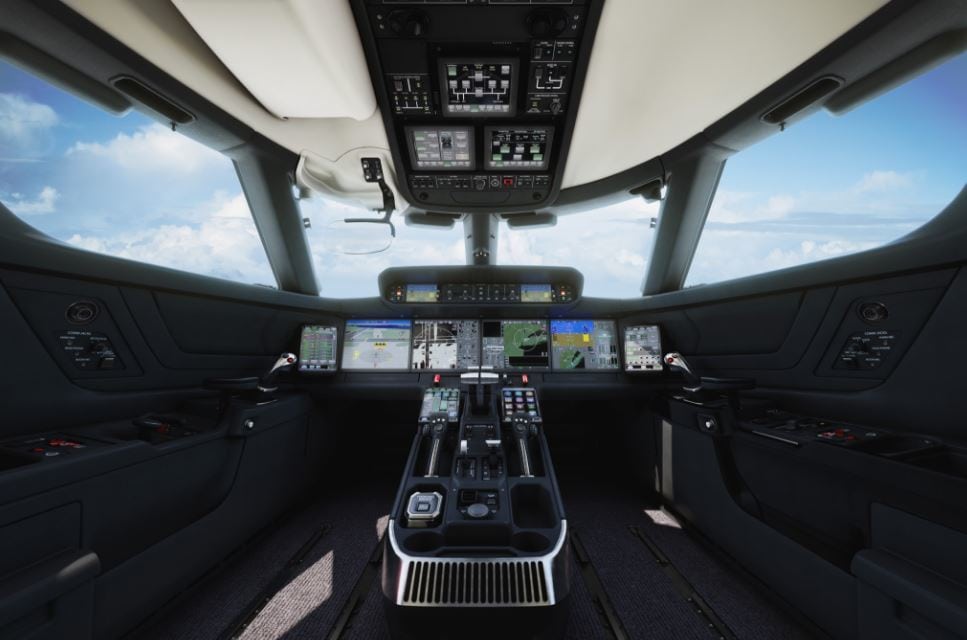
Honeywell’s new touchscreen controls Gulfstream’s G500 Symmetry flight deck. Photo courtesy of Honeywell
Honeywell is the cockpit integrator for the upcoming Gulfstream G500, which just received FAA type and production certification, and the longer-range G600.
The company also supplies a number of parts, most notably the Symmetry flight deck’s new central nervous system, the touchscreen pilot interface, which aims to provide wide-ranging functionality while decreasing pilot workload according to Dan Fuller, Honeywell’s aerospace VP for business aviation.
“We now have this touchscreen device that is really set up predominantly by phase of flight, and it’s very intuitive for the pilot,” Fuller said. “You know, Gulfstream lay down the framework for that as to how all these different components and functionalities within the cockpit will play together in unison for the pilot to make it easy for them, and that’s what the touchscreen does. It’s really the central point of control for this integrated cockpit.”
Honeywell’s new touchscreen is designed to remind of consumer smartphones and tablets to aid in the learning curve. Through it, pilots can access system controls, flight management, communications, checklists, and weather and flight information.
Honeywell has been developing its newest cockpit solutions for the G500 and G600 alongside Gulfstream since 2011, according to Fuller. Over that time, the exact capabilities and technology have evolved and been refined some, but Fuller said the long development cycle has ensured a mature, ready product.
“There are some components like the new touchscreens in the cockpit that have a reliance on Gulfstream to perform ‘X’ amount of certain testing to demonstrate their compliance to the FAA standards or EASA standards,” Fuller said. “A lot of hard work between the two companies; lot of time spent. … This has been going on since the 2011 timeframe in earnest and now we’ve got a very mature product together, something that really hasn’t been introduced into business aviation before.”
That level of maturity owing to “many thousands of hours of testing” is why Fuller is so excited about the system; he thinks customers will be “delighted with it.”
As the cockpit integrator, a big part of Honeywell’s job was ensuring that its new technology worked smoothly with that of Esterline, BAE Systems, Thales, GE Aviation, and other suppliers.
“We’re dealing with a lot of the technologies that were interfacing before with the MCDU (multi-function control and display) device,” Fuller said. “And now we’re saying, ‘now you have to play with the new touchscreen device.’ So, the interface for all of those features really had to change; the core functionality did not change, it only matured.”
In addition to other suppliers’ products, such as BAE’s new active-control sidesticks and an Elbit Systems EVS, that avionics technology also includes multiple Honeywell solutions. Beyond the flagship touchscreen, Honeywell is providing the G500/600 with its SmartView SVS, 2-D and 3-D airport moving maps, HGT400 APU and environmental and cabin pressure control systems.
Fuller did not specify a timeline for this system to be available as a retrofit option for other Gulfstream jets, such as the G650, but indicated it could take some time to go through the necessary steps.
Gulfstream expects to begin deliveries of the $45.5 million G500 by the end of 2018 with the $58 million G600 close behind.